101. Mail Order Monsters
Commodore 64, Atari 400/800 (Electronic Arts, 1985)
Long before Pokemon, there was Mail Order Monsters, in which you didn’t just catch the critters you sent into battle: You created them from scratch. Beginning with one of 12 base bodies ranging from T-rex to carnivorous plant to giant squid, you then slapped on some armor and a weapon and entered gladiatorial battles, where you earned money to buy more updgrades. These could be in the form of better gear, such as a needle gun or electrified mace, or genetic adjustments like tentacles, a poison stinger, or a healing factor. In fact, clysm atAutofish.netsaid it best: “Where else can you build a photosynthetic wasp with tentacles and a flamethrower and go up against a tyrannosaurus with a jetpack and a missile launcher?” Where, indeed?
102. NiGHTS into Dreams
Sega Saturn (Sega, 1996)
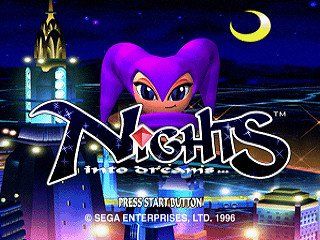
There was something magical about this Saturn classic, in which you soared on a loose, invisible track through dreamlike worlds, flying through rings and spin-dashing enemies. It was anexpert blend of Sonic-style 2D scrolling and Pilotwings-like flight, but with its own timeless personality. And aside from a Japan-only remake and a broken Wii update, we’ve not slipped into this happy dream since.
103. Panzer Dragoon Saga
Sega Saturn (Sega, 1998)
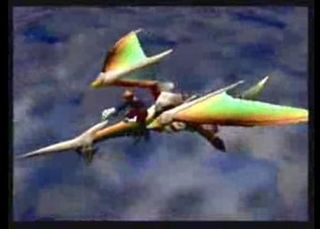
Perhaps the Holy Grail of Saturn games, Panzer Dragoon Saga was technically part of a larger series. However, we’re still including it because it was so unlike its brethren (they were 3D rail shooters, it was an RPG) and because we desperately want another one. Like the other games in the series, the player carries a blaster and rides a flying dragon, facing off against enemies who can appear in front, behind, and on both flanks. But it was free roaming. The combat was more strategic. It had a classic RPG storyline: Boy finds fossilized girl, girl wakes up and is kidnapped by the evil empire, boy meets pet dragon and set out to save her. And best of all, your dragon could morph in real time, changing its shape depending upon whether you wanted more armor, more speed, more laser breath, etc. We need more of this. A lot more.
104. Thrill Kill
PlayStation (EA/Paradox, unreleased)

The year was 1998. The notorious Thrill Kill was finished and ready to ship, but was ultimately deemed too sadistically violent to ever be released. As such, we can only assume that it would be a smashing success as a franchise, if only because people would want to see what all the fuss was about. For those with no moral qualms about such things, bootlegs are available on the interwebs if you know which rocks to look under.
105. Todd’s Adventures in Slime World
Genesis, Lynx (Atari/Epyx, 1990)

Aside from being one of the few worthwhile games on the Atari Lynx, Todd’s Adventures in Slime World contained a slew of original ideas and game variations that pushed the side-scrolling platformer into new territory and were oft imitated. Sadly, Todd never revisited Slime World and we never got the chance to get slimed in 3D.
106. Tork: Prehistoric Punk
Xbox (Ubisoft/Tiwak SAS, 2005)
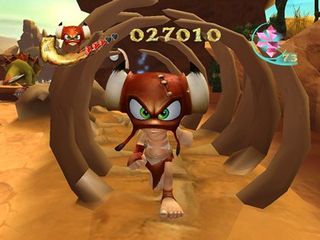
Most things about Tork were derivative, all the way down to the main character’s knockoff Ico headgear. It was a proficient imitator, though, and offered a solid, if youth-skewed, adventure. Kids will always love dinosaurs, shape shifting and time travel so more Tork could be in the cards.
107. Chaos Legion
PS2, PC (Capcom, 2003)
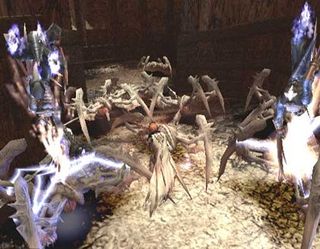
Chaos Legion is a hack-n-slash adventure in the vein of Devil May Cry, with a gothic opera for a story and fanciful characters and bosses filling out it’s evil-encrusted world. The best part? Summonable legions of demon assistants. Hey, franchises have beenfounded on less.
108. Rogue Ops
Xbox, GameCube, PS2 (Kemco/Bits, 2003)

Above: There can never be too many sexy female protagonists
Though reviews were fairly mixed, Rogue Ops was surprisingly good, and even managed to add a little something to the Splinter Cell and Metal Gear dominated stealth genre. Few would say it matched those franchises in quality, but few would hate to see a current-gen sequel, especially if it brought a bit more of that innovation with it.
109. The Con
PSP (SCEA, 2005)
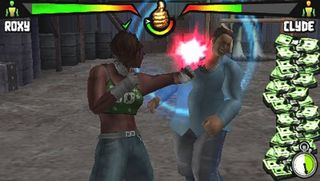
Illegal gambling? Underground fighting tournaments? Aside from some crap art direction, The Con had a lot going for it – we’ll take a good Bloodsport any day, if Sony can be bothered to make another one.
110. War of the Monsters
PS2 (SCE/Incognito, 2003)
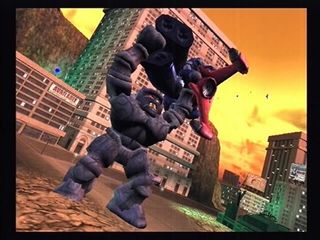
If Rampage were to be hit with unfiltered gamma rays and doused in radioactive phytoplankton, War of the Monsters would emerge from its steaming carcass, bigger and meaner than ever. With vast destructible environments and addictive multiplayer, this magnificent monster brawler literally explodes across the screen. A sequel could (and should) up the player count from 2 to 4 (or 8!) and provide even larger, prettier cities to stomp into rubble.
111. The Adventures of Willy Beamish
Amiga, DOS, Macintosh, Sega CD (Sierra/Dynamix, 1991)

Willy Beamish, age 9, was a Bart Simpson clone (in attitude, if not appearance) from the early ‘90s. A sequel, with Willy as a teenager, was planned but never materialized.
112. Indigo Prophecy
Xbox, PS2, PC (Atari/Quantic Dream, 2005)
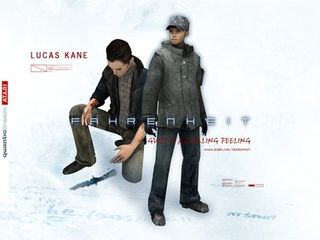
A great game that ended with a cliffhanger, it seems like IP's director David Cage had bigger plans for the RPG/choose your own adventure amalgam. Though the developers’ next game, Heavy Rain, appears to be a spiritual sequel, we'd like to see a continuation of the battle between the Internet and purple alien space magic. We just hope IP 2 isn't as compromised by time and the sexual mores of the US.
113. Stubbs the Zombie in Rebel Without a Pulse
Xbox, Mac, PC (Aspyr Media/Wideload Games, 2005)
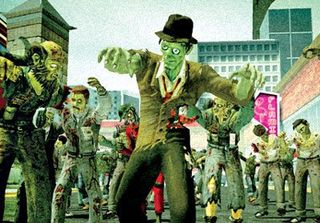
The only non-Halo game made using the Halo engine, Stubbs was the disgustingly fun zombie-film parody built around squad tactics and brain-eating. It was also way ahead of its time (zombies are all the rage nowadays). The story of a planned utopia - built by a rich jerk and former Nazis - being brought down by an individual with a shared past with the rich guy sounds like a BioShock parody, only it came first. The story ends with Stubbs surviving and we want to see him return for the love he deserves.
114. Fighters Megamix
Sega Saturn (Sega, 1997)
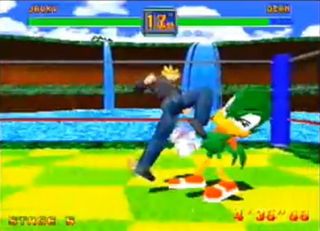
Nintendo’s Super Smash Brothers series is a perennial favorite, so we’ve no idea why Sega hasn’t revived its own mascot-packed 3D fighter. It started with every character from Virtua Fighter 2 and Fighting Vipers, but then tossed in a cartoon duck and bear from Sonic Fighters, two big-headed Virtua Fighter Kids, an Arabian-looking character discarded from the original Virtua Fighter, the girl from Virtua Cop, the car from Daytona USA, a wannabe superhero, a palm tree, a character made of meat, a bean wearing a sombrero… Seriously, how could you resist this game at this point?
115. Guardian Heroes
Sega Saturn (Sega, 1996) GameBoy Advance (Ubisoft, 2004)
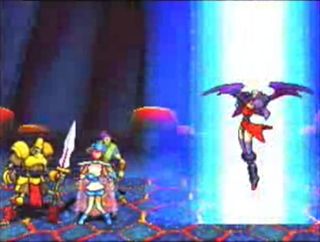
Boutique game developer Treasure is typically known for shooters like Gunstar Heroes, Ikaruga, and Bangai-O. However, this gem proved Treasure could craft a near-perfect side-scrolling hack ‘em-up as well. With support for up to six players, RPG-like upgradable stats, multiple branching story paths, and more than 50 playable characters (though some, admittedly, sucked) this was the apogee of 2D fantasy brawling. That GBA reboot doesn’t count – we want a true sequel. In HD, please.
116. Last Bronx
Sega Saturn (Sega, 1997) PC (Sega, 1998)
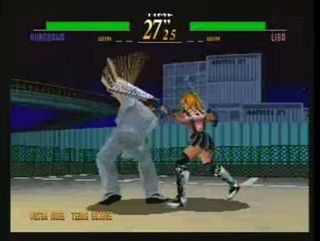
If you closed your eyes and imagined the Soulcalibur series in a sort of gang-ruled urban wasteland setting, you’d basically have 3D fighter Last Bronx. Every character has an attitude and a weapon, ranging from sai or a three-section staff to nunchaku or a giant hammer. Last Bronx took a back seat to Sega’s flagship brawlers Virtua Fighter and Fighting Vipers, but we still wish the title hadn’t been so prophetic - the first game in this series shouldn’t have been the last.
117. Kirby: Canvas Curse
DS (Nintendo/HAL Laboratory, 2005)
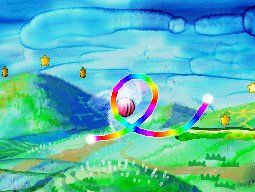
From its launch, DS was floundering in the opinions of gamers, until Kirby's Canvas Curse came out. Barely a Kirby title with regards to gameplay, Curse was the first title to deftly and beautifully take advantage of the DS touch screen possibilities. As you drew the line that the pink ball rolled on, it was an intuitive control scheme, like Nintendo at its best, proving the system's worth to many. Though DS's importance is no longer in doubt, we'd love toride another rainbow with Kirby.
118. The Legend of Dragoon
PlayStation (Sony, 2000)
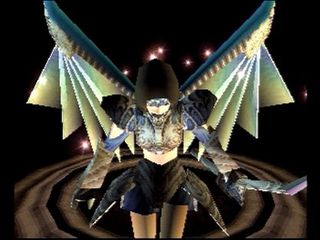
A massive, epic RPG designed to compete with the then-juggernaut Final Fantasy series, Dragoon actually succeeded in its task. It was just as beautiful, nearly as deep, had a touching story, and actually improved upon FF in a few ways (avoidable random battles, for example). Oh, also every character in your party could turn into a freaking dragon. It wasn’t a smash hit - it was released alongside FFXI and Chrono Cross, which couldn’t have helped. But still, given The Legend of Dragoon’s cult status among PlayStation loyalists today, we’re astonished that Sony has allowed this series to fade into obscurity.
119. The Bouncer
PS2 (Square, 2001)
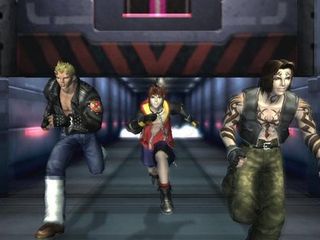
This eagerly awaited brawler was one of the biggest busts of the PlayStation 2’s early years. Coming from a beloved publisher, previews showed off amazing looks and promised truly free-form fights. But the final game was an unbalanced mess with a crazy storyline. However, there was serious potential here, especially for co-op face kicking. With better enemy designs, a tweaked combat system, more creative levels and some serious tuning, it could have been a smash hit instead of a crash landing. We’d like it to try again.
120. Vagrant Story
PlayStation (Square, 2000)
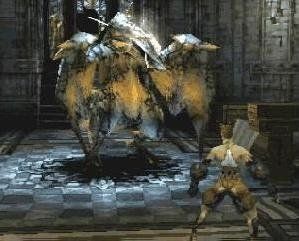
With a distinct, angular art style and comic book-style word bubbles, this moving RPG proved its uniqueness before the player even got control of the main character. You entered battle alone against all sort of creepy beasts, targeting specific limbs in a deeply strategic, yet visceral combat system and constantly deconstructing and rebuilding your weapons into better ones. Vagrant Story was one of a kind. We’d like that to change.
121. Racing Destruction Set
Commodore 64, Atari 400/800 (Electronic Arts, 1985)
Back before racing games were all about either hyper-realism or turtle shells, this isometric-view pedal-stomper was an absolute blast. Its garage of tweakable vehicles ranged from high-performance cars to trucks to street bikes, but the real draw was a track editor that was as versatile as it was easy to use. No other game gave you the power to create a track filled with swerves and jumps, ice, pavement, and dirt, set the gravity to “moon”, and then tear around it on a crotch rocket speed bike with spiked tires. We want to do that again.
122. Super Magnetic NEO
Sega Dreamcast (Crave, 2000)

There are a tons of failed platform franchises out there, but this odd little guy deserved something better. The hook was that Neo’s head was a magnet, which enabled him to stick to certain things and violently repel other things, depending upon his polarity. Combine this with the fact that he could switch this polarity at will, and you have unique gameplay. Layer on some charming characters and you have a game that deserves another chance.
123. Tech Romancer
Sega Dreamcast (Capcom, 2000)
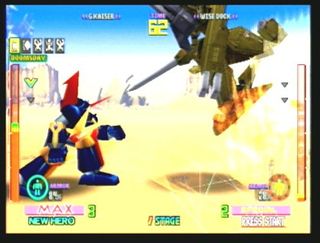
We get it: Fighting games aren’t as hot as they used to be. But come on! This is an arcade-style brawler in which the muscleheads and bikini babes are replaced with massive metal titans. The mech designs are reminiscent of those in classic anime like Patlabor and Mazinger Z, there’s a decent sense of scale, and it’s just deep enough that you can’t get beaten by a button masher, but you don’t need to spend your life mastering its intricacies. Capcom’s fighting games are enjoying a bit of a renaissance at the moment; we hope this one gets out of the garage again.
Love our picks? Hate ‘em? Got any glaring omissions to point out? Deploy a comment below.
Apr 30, 2009


The Top 7… Series run into the ground
They had it. They lost it. Here they are

These devs score a flawless victory

See the video that set the internets on fire!
